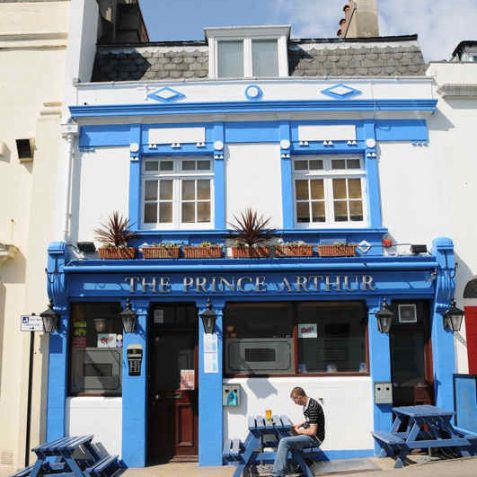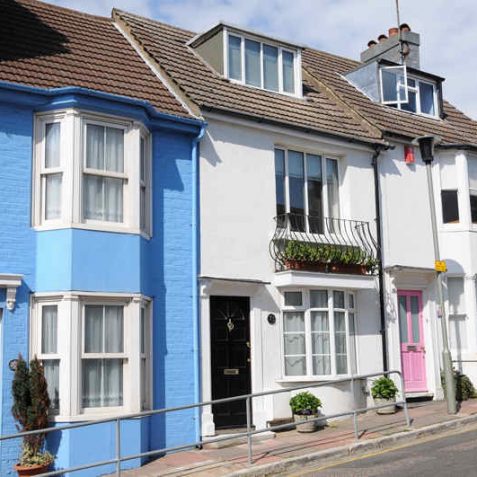Northwards from Regent Hill
Please note that this text is an extract from a reference work written in 1990. As a result, some of the content may not reflect recent research, changes and events.
Western Road runs between the Regency Square and Clifton Hill outstanding conservation areas, and the roads leading northwards from it are worth exploring. Regent Hill, Marlborough Street, Crown Street, Dean Street and Spring Street, the first five side streets from Dyke Road, all retain small, attractive artisan cottages of the 1820s, many with bowed facades or windows and balconies. Nos.18-20 Regent Hill have narrow bows and are listed buildings, while nos.14, 15, 19, 22 and 23 Crown Street are included on the borough council’s local list of buildings of special interest.
Any numerical cross-references in the text above refer to resources in the Sources and Bibliography section of the Encyclopaedia of Brighton by Tim Carder.












Comments about this page
These beautiful bow fronted houses (1820s) with interesting trellis themed porticos are very similar to the slightly larger (possibly slightly later) examples in Borough Street. They may have been erected by the same builder, perhaps one of the Wisden family who developed parts of what became Clifton Hill. There are Wisdens listed as early residents. In 1845, Charles Patching of Patching & Wood cabinet makers (11 or 12 Ship Street) lived at the grade II listed no. 14 Crown Street shown here. In the 1920s, there was a school at the top of Crown Street (demolished prior to the building of Bishop’s Walk). The school also had an entrance in Dean Street. A current resident has lived in the Street for 90 years and has photos of themselves as a child at the school gates with other children from the street. There are also photos of the listed buildings in Crown Street taken in the 1940s (maybe in-case of bombing?), but otherwise I have found no early photographs. I have heard rumours that some of these cottages are built into what was originally an arms store for the military barracks that were replaced by Regency Square. This barracks is perhaps the reason for nearby Castle Street’s name. If anyone has any further info about Crown Street I’d be interested to hear.
This is Spring Street I think.
This is Dean Street.
Definately Dean St. My nan lived opposite the Prince Arthur, where Esme was the landlady, at no.3. for 60 years she rented, she didn’t want an inside toilet put in because the rent would have gone up! She took in soldiers during the 2nd world war to make some extra money. She worked as a miliner and lived there with my dad, then my dad, mum and I lived there from 1953 for a couple of years until we got our own house in Upper Lewes Road, Brighton.
This is definately not Dean St as my nan lived there for 60 years and it was all houses and no shops, but I recognise it as Spring St.
I lived at number, 11 in the 1940s to early 50s built around 1880 which was pulled down to build the tax office which is now called 11. There was a Regents Court area house up from me. This was an area from the 1800s with a lane which ran down the back of the houses. My house had old flints walls, and glass stuck in the top of the back flint walls to stop any body climbing over. The windows had old wrought iron latches. A butler sink, old kitchen teracotta floor tiling, and a tall deep beamed fireplace. If it was not pulled down and still around now, it would sell for a bomb. I used to go and play around the corner with my friends where a road used to run at the back of Marks and Spencer right through to Dyke Road and where the fishermen’s cottages used to be. All demolished and road blocked with warehouses. All ugly I am afraid to say.
Add a comment about this page